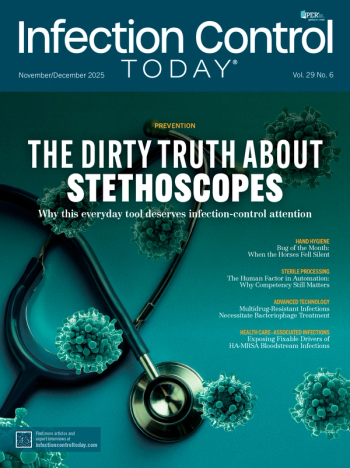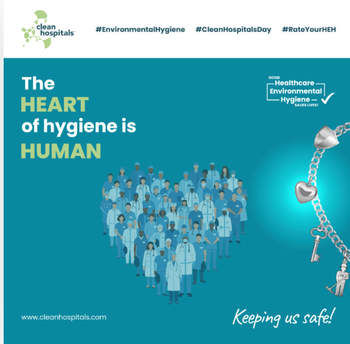
Non-tuberculous Mycobacterium Outbreak at Surgery Center Highlights Infection Control Lapses
A rare Tennessee outbreak of Mycobacterium fortuitum revealed deep gaps in infection prevention at outpatient surgery centers—where oversight, staffing, and reporting often fall short.
An oral abstract presented by Simone Godwin, DVM, MPH, CIC, at the SHEA Spring 2025, spotlighted a rare but revealing outbreak of Mycobacterium fortuitum at an ambulatory surgical center (ASC) in Tennessee—an incident that exposed the vulnerability of outpatient surgery centers when infection prevention systems are overly complex or fragmented.1
The conference was held from April 27 to 30, 2025, in ChampionsGate, Florida.
A Rare Outbreak with Familiar Roots
The outbreak first came to light in July 2023, when 5 patients developed M fortuitum joint infections after procedures at the same ASC. Though the organism is an environmental pathogen, the fact that this center had so many in such a short time prompted a public health investigation.
That is when the real issues began to emerge. The ASC was part of a complex operational setup: a hospital-owned building, a privately run surgical group, and a separate management company overseeing operations. The facility was noted to lack a water management plan, had no certified sterile processing staff, and its infection preventionist (IP) juggled multiple unrelated roles. Notably, there is no law in Tennessee requiring ASCs to report surgical site infections, so there was no formal mechanism in place to detect an outbreak or issue.
While M fortuitum was not recovered from the ASC’s water or environment, investigators found multiple lapses in reprocessing and aseptic technique. A case-control study pointed to 1 unlicensed surgical technologist as being significantly associated with the infections. That technologist later began working at a second ASC where yet more cases emerged. Whole-genome sequencing confirmed the cases from both centers were genetically identical, linking them to a single source.
Infection Prevention Challenges in Outpatient Surgery
This outbreak reflects broader national concerns that all in infection prevention and control (IPC) are very familiar with for ASCs. These facilities have historically operated with less oversight than hospitals, despite now performing increasingly complex procedures such as joint replacements, advanced endoscopy, and pain management interventions. A 2010 study published in JAMA found that 67% of Medicare-certified ASCs had at least 1 infection control lapse, with nearly 1 in 5 having violations in 3 or more key areas—including improper equipment reprocessing, unsafe injection practices, and lapses in environmental cleaning. Notably, 28% did not follow the recommended practices for reprocessing equipment.
While efforts have been made in the years since to raise the bar, the oversight gap has likely not fully closed. ASCs are still not held to the same mandatory surgical site infection surveillance or reporting standards as hospitals.3 Infection preventionists (IPs) working in ASCs may be part-time, cover multiple sites, or have limited authority, especially in privately owned or joint venture centers. In many cases, IPC programs exist on paper but lack the necessary staffing, resources, or influence to enforce best practices on a day-to-day basis. A 2024 review in the American Journal of Infection Control further underscored this issue, noting that IPs are predominantly employed in hospitals, with relatively few working in ambulatory settings like ASCs—leaving significant gaps in infection prevention oversight across the outpatient care spectrum.4
This patchwork of responsibility, especially when multiple entities (building owners, hospital systems, surgical groups, and ASC management firms) are involved, makes it easy for infection prevention efforts to fall through the cracks. The outbreak is a striking example of how systemic weaknesses—like unclear roles, untrained staff, and no surveillance mechanisms—can compound and allow preventable infections to spread undetected.
NTM Infections: Why Reporting Even One Case Matters
The Council for Outbreak Response: Healthcare-Associated Infections and Antimicrobial-Resistant Pathogens (CORHA)—a national collaborative that includes CDC, Council of State and Territorial Epidemiologists (CSTE), public health departments, and the Society for Healthcare Epidemiology of America (SHEA) and the Association for Professionals in Infeciton Control and Epidemiology (APIC) experts—has also issued guidance specific to nontuberculous mycobacteria.
According to CORHA, even a single case of extrapulmonary nontuberculous mycobacteria (NTM) infection (such as those involving surgical sites or joint infections) should prompt reporting to public health and investigation by the facility.5 CORHA’s recommendations emphasize that extrapulmonary NTM cases are often tied to environmental sources and may be early signs of a broader outbreak. CORHA encourages immediate notification of public health authorities and outlines steps for investigation, including environmental assessments, infection control reviews, and molecular testing of isolates when available. These tools help identify pseudo-outbreaks versus true health care-associated clusters and reinforce the importance of early detection, particularly in outpatient settings where routine surveillance may be limited.
The lesson is clear: outpatient surgical centers must treat infection prevention as foundational—not optional. Certification for sterile processing staff, structured onboarding and credentialing, and routine infection surveillance are critical safeguards. With groups like CORHA reinforcing that even a single extrapulmonary NTM case warrants public health reporting, the bar for vigilance is clear. As ASCs continue to expand their procedural scope, their infection control infrastructure must grow in parallel to prevent the kind of harm that is both devastating and, in many cases, preventable.
References
- Godwin S. Lessons from an Outbreak of Mycobacterium fortuitum in an Ambulatory Surgery Center. Oral abstract presented at: SHEA Spring 2025 Conference; April 2025; Orlando, FL.
- Schaefer MK, Jhung M, Dahl M, et al. Infection control assessment of ambulatory surgical centers. JAMA. 2010;303(22):2273–2279. doi:10.1001/jama.2010.744
- National Healthcare Safety Network (NHSN) Surgical Site Infection Surveillance (SSI) for Ambulatory Surgery Centers. Alexandria, VA: ASCA; 2013. Accessed May 12, 2025.
https://apic.org/Resource_/TinyMceFileManager/Academy/ASC_101_resources/Surveillance_NHSN/ASCA_NHSN_SSI_Surveillance_2013.pdf - Knighton SC, Engle J, Berkson J, Bartles R. A narrative review of how infection preventionist (IP) staffing and outcome metrics are assessed by health care organizations and factors to consider. Am J Infect Control. 2024;52(2):91–106. doi:10.1016/j.ajic.2023.06.017
- Council for Outbreak Response: Healthcare-Associated Infections and Antimicrobial-Resistant Pathogens (CORHA). Nontuberculous Mycobacteria (NTM): Recommended Practices for Healthcare Outbreak Response. August 2022. Accessed May 12, 2025.
https://corha.org/assets/documents/CORHA-Proposed-NTM-Thresholds-and-Definition-08-19.pdf
Newsletter
Stay prepared and protected with Infection Control Today's newsletter, delivering essential updates, best practices, and expert insights for infection preventionists.





